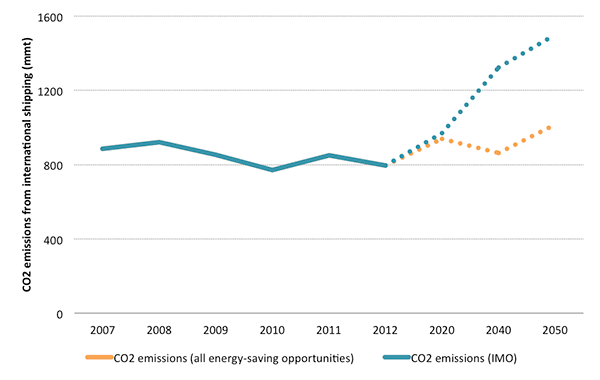Blog
What Paul Krugman gets right, and not quite right, on slow steaming
Ever since I began to study international economics in college in China, I’ve been a fan of Paul Krugman’s. So I was very interested to see him blogging in the New York Times about slow steaming in international shipping, a topic on which I wrote my PhD dissertation in 2009.
Mr. Krugman gets it mostly right: slow steaming, for now, conciliates the growing demand for shipping services and the need to reduce energy consumption. A little straightforward math will demonstrate. The speed and the energy consumption of marine diesel engines follow a cubic function, meaning that for a given voyage a 10% speed reduction leads to 27% less energy use (1-(1-10%)^3 = 27%) by the main engine. Taking into account longer time to complete a voyage and extra ships to cover the lost frequency, ship owners would conserve 9% of energy by slowing down their ships 10% from the design speed. As the energy cost represents over half a ship’s operating cost, ship owners have strong incentives to cut ship speeds even further, saving more energy and thus trimming their carbon footprint. Indeed, slow steaming has been a crucial cost-saving tactic in the international shipping industry, which in recent years has experienced a perfect storm of elevated fuel prices, depressed freight rates, and a glut of new ships that were ordered and built when international trade was booming. According to the International Maritime Organization (IMO), the governing body of international shipping, total CO2 emissions from the industry dropped from 880 million metric tonnes (mmt) in 2007 to 800 mmt in 2012 (see the chart below), while total ton-miles rose 10% over the same period.

Historical CO2 emissions growth, the projection by IMO under the business-as-usual scenario, and the forecast by ICCT assuming all existing energy-saving opportunities are realized by 2040
What Mr. Krugman did not recognize is that ships can only cut their speeds so far without tradeoffs. The fuel economy of large marine engines significantly deteriorates below 12 knots, and customers are already unhappy about longer-than-usual delivery times. And of course there’s every reason to expect that ship owners would revert to normal speeds if economic conditions become more favorable, eroding and eventually eliminating all the gains of CO2 reduction. As the chart shows, the IMO projects that CO2 emissions from the shipping will grow 150% by the middle of this century, due to higher speeds and more shipping activity.
By coincidence, this is precisely one of the agenda items that the Marine Environmental Protection Committee (MEPC) of the IMO is discussing this week. In fact, international negotiations have been going on for the past decade over policy prescriptions for reducing CO2 emissions from international shipping. In July 2011, the IMO adopted the Energy Efficiency Design Index (EEDI), a regulation requiring new ships to achieve 10% to 30% energy-efficiency gains between 2015 and 2025. More recent discussions centered on limiting emissions from the industry’s 60,000 vessels in service. The U.S., Japan, and Germany have all floated proposals at this MEPC meeting. We at the ICCT estimate that by harnessing existing energy-saving opportunities, including slow steaming, the industry could cut CO2 emissions by 400 mmt from the IMO’s projection, keeping international shipping’s carbon footprint in 2040 at the 2007 level while moving twice as many goods (see the chart).
As Krugman said in his book The Crisis Economy “The Return of Depression Economics and the Crisis in 2008,” curing economic recession requires a combination of policy remedies. The same can be said about mitigating climate change—as Mr. Krugman knows perfectly well. Slow steaming is most certainly part of the answer to curtailing energy use and climate pollution from shipping. It’s just not the full answer.
